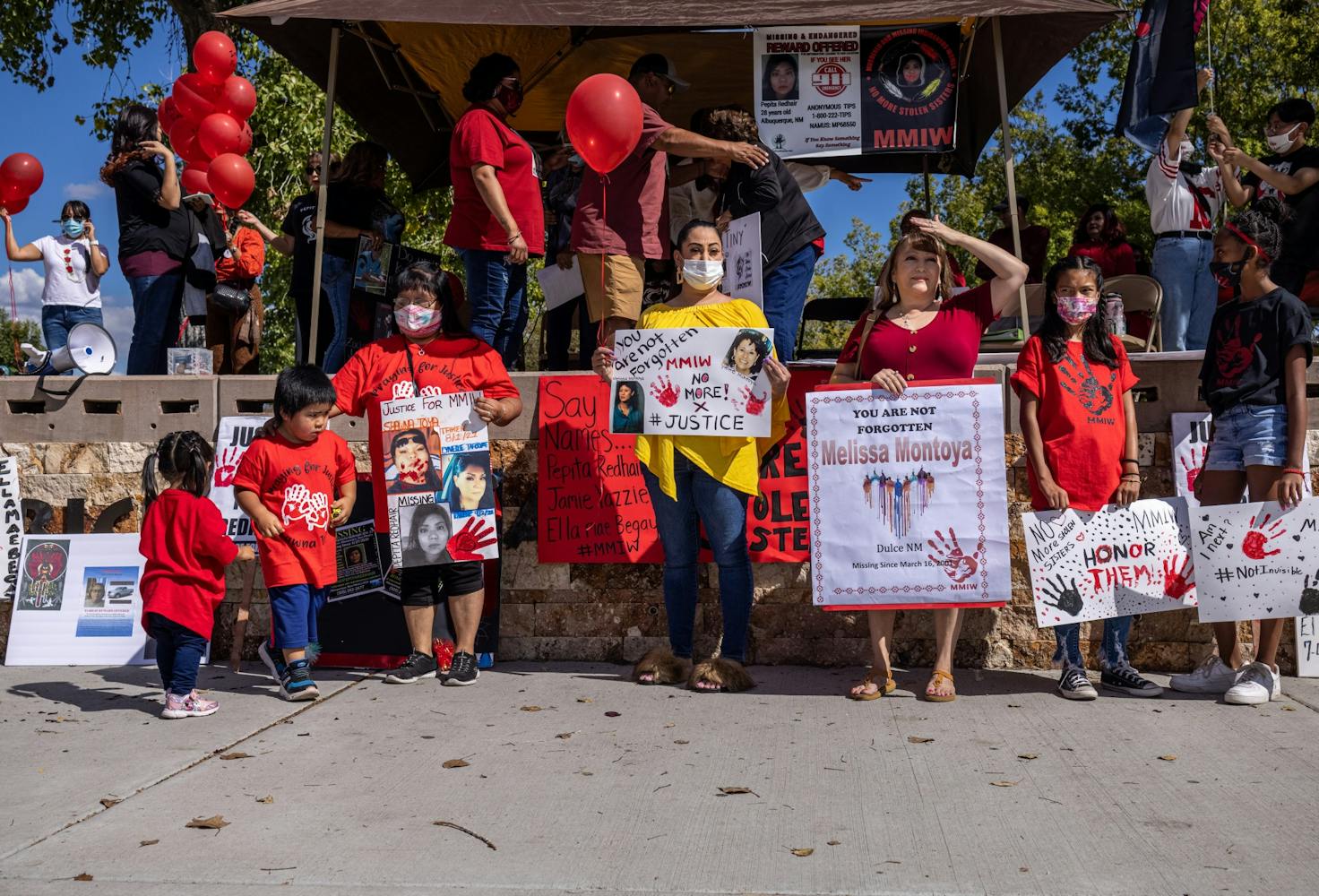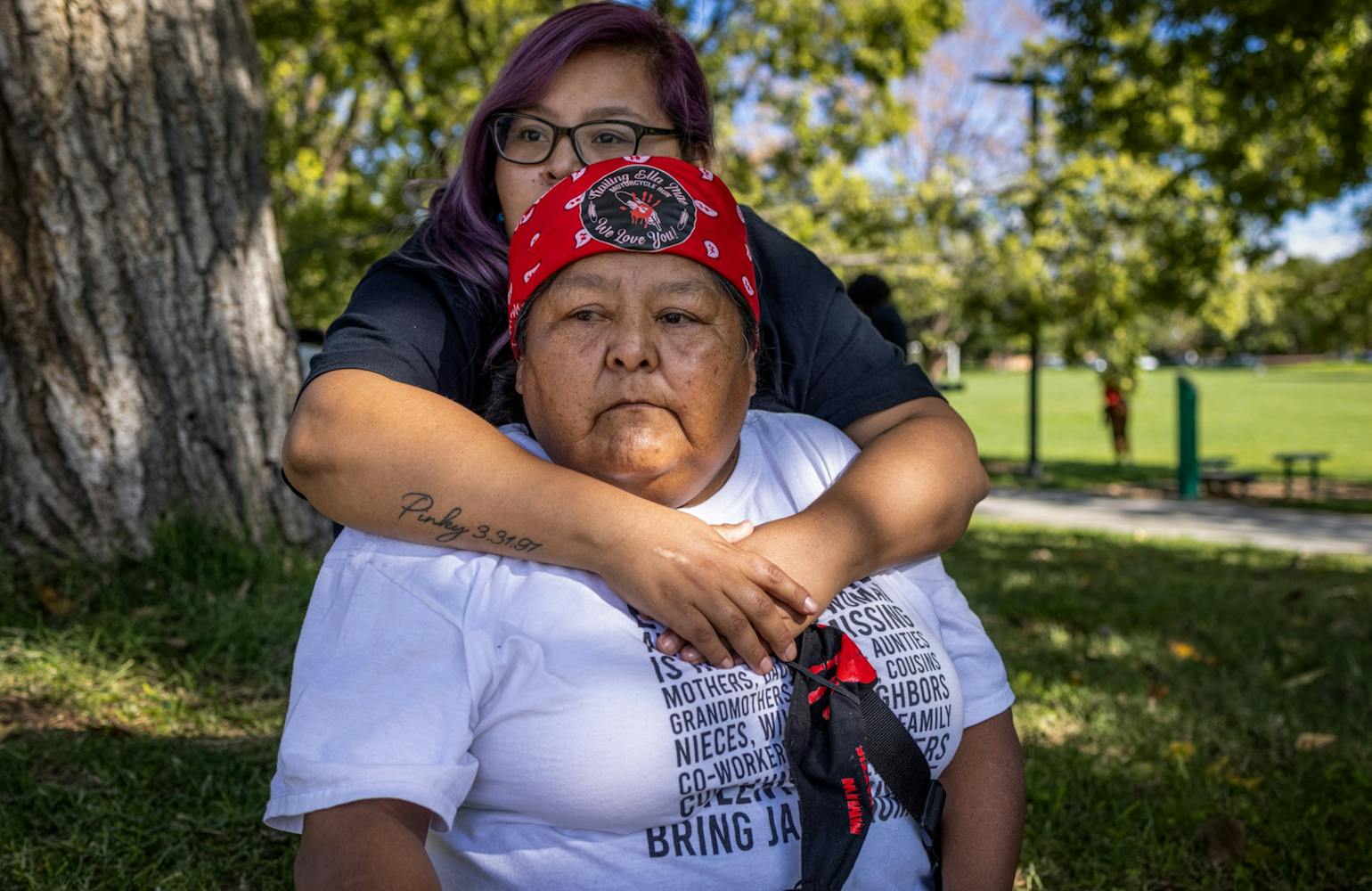Correction 1/13/22: A previous version of this article stated that Anita King had been missing since March 27, 2019. This has since been updated to the correct date of March 27, 2020.
Dozens of Indigenous families, individuals and allies gathered on Sunday, Oct. 3 at Tiguex Park to march for awareness of missing and murdered Indigenous women. The rally featured stories and testimonies from a broad range of people affected by the staggering number of missing and murdered Indigenous people whose cases remain unsolved.
Speakers highlighted the apathetic attitudes of law enforcement and the structural ineptitudes of federal, state and tribal agencies to cooperate and share investigative responsibility. In addition, attendees brought up victim-blaming and shaming as barriers to achieving justice for missing Indigenous people.
Anita King, the mother of 27-year-old Pepita Redhair — who has been missing since March 27, 2020 — took the stage following the march to plead for help in finding her daughter who she and her family have been fervently looking for for over a year and a half.
“We have searched every inch of this area for her, and we will not give up until we know the truth behind her disappearance. We do this for Pepita. We do this for all our missing sisters,” King said. “There’s times that I don’t want to get up and go to work. There’s times that I don’t want to eat. I just lay there and cry.”
King said Redhair’s boyfriend, Nicholas Kaye, was an abusive partner and was the last person to see Redhair before she went missing. Kaye filed a missing persons report with the Albuquerque Police Department on April 19, 2020 in which he reported that he and Redhair had been drinking together on the night of March 26, 2020 and that she had left on foot following an argument between the couple.
Navajo Nation Council Delegate Eugenia Charles-Newton spoke about her own experience as a survivor of abduction. In 1995, she went missing for nine days when she was just 17 years old, taken by an abductor that her family knew. Charles-Newton was eventually found wandering on a road by a passerby and taken to the hospital. However, Charles-Newton’s family was told by tribal law enforcement that she was a troubled youth and not to worry because she would come back.
“I was told that my life wasn’t anything that mattered, (that) my report, my story, didn’t matter,” Charles-Newton said. “And that’s what I have to live with every day, is the fact that for nine days I was missing and there was not one person who came out looking for me. My family tried.”
Ethelene Denny and Marilene James, the respective mother and aunt of the currently missing nursing student Jamie Lynette Yazzie, who was last seen in June 2019 in Arizona, detailed an almost-identical encounter with tribal police. They were told by officers that any sort of interference with the official investigation, including things like canvassing, could lead to criminal obstruction charges. While they hope that she comes home soon, they want answers if she’s not found.
“I put it out there constantly that she’s missing,” James said. “We want to keep positive and believe that she’s still out there and one day she will come home. But there’s times when I doubt it.”
Redhair and Yazzie were just two members of a large group of missing Indigenous women and one teenage boy that were represented at the rally. Several attendees and speakers expressed frustration that the swarm of media attention surrounding the case of Gabby Petito — a 22 year-old woman from Long Island, New York whose remains were recently found in Wyoming — demonstrates how much white bodies are valued more than brown ones.
Petito was reported missing just over a week before her body was found in the Bridger-Teton National Forest. By comparison, Wyoming’s Missing and Murdered Indigenous Persons Task Force found that 710 indigenous people were reported missing in Wyoming over the past decade and only 50% of them were found within a week. The report also found that 21% of missing Indigenous people were still not found more than 30 days later.
Get content from The Daily Lobo delivered to your inbox
“The newspaper articles for Indigenous homicide victims were more likely to contain
violent language, portray the victim in a negative light and provide less information as
compared to articles about white homicide victims,” the report said regarding media coverage between 2011 and 2020.
A complete list of reported missing Indigenous persons can be found on the National Missing and Unidentified Persons System.
Hevyn Heckes is a freelance reporter for the Daily Lobo. She can be reached at news@dailylobo.com or on Twitter @melloh_cielo







